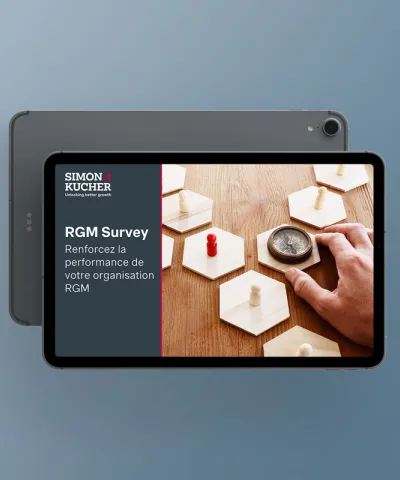The UK’s net zero transition demands innovation. But bringing that innovation to market? That’s where the real challenge for climate tech firms begins.
The commercial reality
Across infrastructure, energy, and asset-intensive industries, the pressure to decarbonize is rising fast. Organizations are responding with new technologies and smarter systems, but many face the same hurdle: how to turn that innovation into a commercially viable solution.
Value creation isn’t enough today. It must be matched by value capture.
That means having a clear monetization strategy from the outset. One that reflects customer willingness to pay, aligns with regulatory incentives, and lays the foundation for long-term commercial success.
Why great ideas underperform commercially
The commercial risks facing innovation aren’t always technical. In fact, they’re often pricing and positioning failures. We see this play out in several ways:
Products overloaded with features that customers don’t value
Solutions priced too low, failing to reflect the true economic value
Innovations that solve a real problem but are marketed as technical tools, not commercial benefits.
Each of these issues prevents highly innovative solutions from capturing value. And they’re more common than many assume.
Unlock your pricing potential: Elevate your product by getting the price right first
In a highly regulated sector like industrials, monetization requires precision: build a strategy around the value delivered to potential customers. Three focus areas stand out:
1. Understand customer willingness to pay early
Customer insight often comes as an afterthought. Speaking to customers early about their needs – risk avoidance, operational efficiency, or regulatory compliance – can help inform both innovation and pricing.
Identifying where the value lands should then drive the pricing logic. What is the value of avoided fines? How much are maintenance costs reduced?
Cost-plus pricing remains the default in many technology and industrial businesses but it frequently leads to underpricing. Create and capture value by identifying customer needs early and monetizing the benefits with value-based pricing, which enables both stronger pricing and greater impact.
2. Choose the right pricing model
Flat fees don’t always reflect how value is delivered. In many cases, outcome-linked models or tiered usage structures are more appropriate.
For instance, charging per unit installed may overlook the broader financial impact. A structure that aligns pricing to measurable savings or risk reduction is often more commercially robust, and easier to justify to procurement.
3. Make value tangible
The case for monetizing innovation is rarely made through technical features. It’s made through outcomes.
When engaging with UK buyers, especially in operational or regulatory roles, messaging should focus on what the solution delivers. For example, a carbon and system monitoring solution might emphasize fewer failures.
What this means for commercial teams
Commercializing innovation isn’t just about setting the right number. Businesses succeed when they build a holistic monetization approach that positions the product effectively, supports sustainable revenue, and strengthens negotiating power.
For UK technology teams bringing new technologies to market - particularly those touching climate, infrastructure, or regulation - the key is simple: start early, quantify value rigorously, and don’t leave pricing to the end.
To succeed commercially, innovation needs structure. That’s where an effective monetization strategy makes the difference.
Get in touch today.
Special thanks to Ben Harrison for his contributions to this article!








